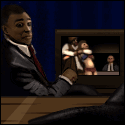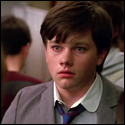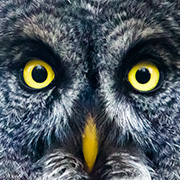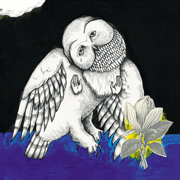|
ExecuDork posted:I accidentally discovered the Clarity slider in LR can be used to reduce choppy high-contrast waves on water shot at a low angle. Not sure I like it, it makes the water seem kind of milky. What does the original look like?
|
|
|
|

|
| # ? Jun 6, 2024 14:19 |
|
I don't have the unedited version exported from LR and uploaded, but here's a much lighter touch. Day 3 Loons 2 by Execudork, on Flickr Day 3 Loons 2 by Execudork, on FlickrThe other one was -100 on Clarity; I was messing around with a Virtual Copy. This is the one that's more in line with what I was aiming for when I started editing, Clarity -25 to just take the hard dark edges off the water.
|
|
|
|
 bird by cha_reckoning, on Flickr Set up a suet block to see some birds this winter. So far its working pretty great  Now to practice shooting birds. Now to practice shooting birds.
|
|
|
|
Finally got around to processing some of my photo backlog. A few months ago I had a week-long work trip in Austin, TX which stretched over the weekend. Since I was stuck there, I hiked up to the Balcones and the Hornsby Bend Bird Observatory. The beautiful Balcones was a huge dissapointment...big storm was rolling through and the entire area was covered in fog. In contrast, the Hornsby Bend Bird Observatory -- which is actually Austin's water reclamation plant -- had tons of great birds to photograph. Go figure. Green Heron by zacharytong, on Flickr I was sitting by the pond for about twenty minutes photographing some ducks. Right before I packed up to leave, I noticed some movement about five feet away at the shoreline. Behold: a Green Heron had been chilling there the entire time. It apparently had decided I wasn't a threat and had gone back to fishing, which is why I noticed it moving. Pretty sure it had been holding perfectly still for 20 minutes  Loggerhead Shrike by zacharytong, on Flickr  Yellow Warbler by zacharytong, on Flickr  Northern Mockingbird by zacharytong, on Flickr  Blue-gray Gnatcatcher by zacharytong, on Flickr  U wot mate by zacharytong, on Flickr
|
|
|
|
crossposting from the birding thread: I'm going to be driving down from Seattle to San Fran starting tomorrow, and was wondering if anyone had some good birding recommendations? We're in no hurry, though we'll likely hit the 5 as far as southern Oregon before picking up the 101 and 1 once in California. Arcata marsh is one place we're planning on hitting, but other than that we're pretty much winging it, with no real itinerary or pressing schedule. I know a few of you are from around that neck of the woods, so if you've got any local knowledge, especially for photography, it'd be appreciated. Looks like the weather might be a bit grim, but we'll hope for the best (or hope for a huge bargain on a 7D or something with better ISO performance than a 40D in Oregon on the way down!)
|
|
|
|
Linedance posted:crossposting from the birding thread: Arcata Marsh and Point Reyes are both stellar birding areas along that route. If you're going to spend more than one day in the Arcata/Eureka area, the Humboldt Bay National Wildlife Refuge and the wilderness areas around the Eel River delta have a ton of bird activity this time of year, too. Lake Merritt in Oakland is a pretty great spot for waterfowl and grebes if that's what you're into. If you're curious about where to find any specific birds at Arcata Marsh, feel free to ask - a lot of my photography and video comes from there, and I know the favorite spots of a lot of its year round and winter residents.
|
|
|
|
To follow up on this, Bolinas Lagoon at Pt. Reyes is good. Drakes Bay and the Lighthouse/Fish Docks are a little off the beaten path but good for ocean birds. I'm sure Bodega Bay would be nice too but I don't know the specific locations. Pt. Isabel/Albany Bulb off of I-80 in the East Bay is pretty good, and Tilden or Briones Regional Park for upland stuff. Whole host of good spots south of Oakland as well (MLK shoreline, Coyote Hills) If you happen to come down I-5 instead, Sacramento National Wildlife Refuge and Colusa NWR are good. Yolo Bypass Wildlife area is just west of Sacramento- parts may be closed for hunting but it rarely disappoints.
|
|
|
|
Moon Potato posted:Arcata Marsh and Point Reyes are both stellar birding areas along that route. If you're going to spend more than one day in the Arcata/Eureka area, the Humboldt Bay National Wildlife Refuge and the wilderness areas around the Eel River delta have a ton of bird activity this time of year, too. Lake Merritt in Oakland is a pretty great spot for waterfowl and grebes if that's what you're into. Moon Potato posted:Arcata Marsh and Point Reyes are both stellar birding areas along that route. If you're going to spend more than one day in the Arcata/Eureka area, the Humboldt Bay National Wildlife Refuge and the wilderness areas around the Eel River delta have a ton of bird activity this time of year, too. Lake Merritt in Oakland is a pretty great spot for waterfowl and grebes if that's what you're into. Welp, I've just been handed a list, lol, so if you know where to look for: Waders (dowitchers, willet, avocet) Long billed curlew White tailed kite (I think I remember you saying the ones you were filming had left, hopefully there's still some around) Surf birds (turnstones, knots) That's just a general list. Me, I'd love to catch a glimpse of a bittern. I saw a Eurasian one in the UK fell in love with them. Also, anywhere along the route good for golden eagles? I think how long we spend around arcata and eel river depends on how well the weather holds out. Will check out Point Reyes for sure.
|
|
|
|
BetterLekNextTime posted:To follow up on this, Bolinas Lagoon at Pt. Reyes is good. Drakes Bay and the Lighthouse/Fish Docks are a little off the beaten path but good for ocean birds. This is good stuff, thanks. If we've had our fill of coastal birds by California we might check out some of the inland spots off 5.
|
|
|
|
Linedance posted:Welp, I've just been handed a list, lol, so if you know where to look for: Here's a map of Arcata Marsh for reference: http://arcatamarshfriends.org/maps/arcata_marsh_map.pdf Dowitchers and Long-billed Curlews are around the McDaniel Slough/restored salt marsh area right now, usually along the levee that goes to the slough mouth (at medium and low tides). General shorebird/wader/surfbird activity tends to be around the parts that border the bay. At low tide, most of them go out to feed on the mudflats of the bay, then at high tide they take shelter in Klopp Lake, where the oxidation ponds and salt marsh meet the bay and in the McDaniel Slough/restored salt marsh area. The bitterns love the area around the eastern and western ponds (the small unlabeled ones above the brackish pond) and the adjacent little pond wedged between I Street and the railroad tracks (not on the map), but I've only seen them out in the open a couple times this fall. They come out more often in the last couple hours before sunset and shortly after rainfall. The kites that had a nest at Arcata Marsh seem to have moved to the farmland along Samoa Blvd. but I still see them pass through the marsh fairly regularly. The Humboldt Bay National Wildlife Refuge is probably the best spot to see them in the area. Apparently there's a Golden Eagle in Del Norte County right now. I haven't gone to see it, but there's been a bunch of chatter on the local birding feeds about it: http://birding.aba.org/mobiledigest/CANW Enjoy your trip! I don't think there's another part of the country I'd rather drive through. Edit: I went to the Humboldt Bay National Wildlife Sanctuary today, and found out that they allow duck hunting there on Tuesdays and Saturdays during the winter. Avoid those days if you don't want to hear gunshots every 10 minutes or so. Moon Potato fucked around with this message at 07:23 on Nov 30, 2014 |
|
|
|
Finally saw another owl in the wild. A snowy owl flew right over my head last week but I thought it was a seagull and didn't realize until it was too late.  Eastern Screech Owl by justincook5376, on Flickr Eastern Screech Owl by justincook5376, on Flickr
TheMirage fucked around with this message at 01:14 on Nov 30, 2014 |
|
|
|
polyfractal posted:
All gorgeous, but this is one of my lifers; specifically, I want to find one on its butcher post.
|
|
|
|
A few from the Northern Harrier I was able to shoot today. Northern Harrier by justincook5376, on Flickr Northern Harrier by justincook5376, on Flickr Northern Harrier by justincook5376, on Flickr Northern Harrier by justincook5376, on Flickr Northern Harrier by justincook5376, on Flickr Northern Harrier by justincook5376, on Flickr
|
|
|
|
Too much sharpening/highpass/clarity with those bad halos.
|
|
|
|
I did something a bit different this morning; rather than go to a place and look for what birds I could find, I looked for specific birds. There's a mailing list for NW Washington mainly used for reports of noteworthy bird sightings, and I used to it go look for a snowy owl in Edmonds on the waterfront and an American white pelican near the boat launch on the southwest end of Lake Sammamish. Didn't find the snowy owl (the last sighting of her was on Friday) but did find the pelican, a rare (but not unheard-of) example west of the Cascade Mountains.  ♂ White Crowned Sparrow (Pacific) on a frosty rock, Edmonds Marina Beach (WA)  ♂ Dark-eyed Junco on a frosty curb, Lake Sammamish State Park (WA)  MINE! MINE! MINE! Two gulls fight over a dead fish. I have some even worse photos of them pulling on it from opposite ends, suspending it in the air between them. Edmonds Marina Beach (WA)  American White Pelican, Lake Sammamish State Park (WA). Very rare around here.  I need ID help on this one, I can't seem to ID it. I can provide a few other face angles if needed. A sparrow of some sort I think, but I can't find it in my Sibley guide.
|
|
|
|
It was -21 today, I lost feeling in my fingers Raven in flight by tylerhuestis, on Flickr Raven in flight by tylerhuestis, on Flickr Merlin by tylerhuestis, on Flickr Merlin by tylerhuestis, on Flickr Gyrfalcon by tylerhuestis, on Flickr Gyrfalcon by tylerhuestis, on Flickr Prairie Falcon hunting by tylerhuestis, on Flickr Prairie Falcon hunting by tylerhuestis, on Flickr
|
|
|
|
Kenshin posted:
Pine Siskin, it's actually related to goldfinches! It's been a good winter for those down here in California as well. e: nice falcon series Kenshin BetterLekNextTime fucked around with this message at 04:20 on Dec 1, 2014 |
|
|
|
BetterLekNextTime posted:Pine Siskin, it's actually related to goldfinches! It's been a good winter for those down here in California as well. Thanks! (but neckbeard did the falcon series  ) )
|
|
|
|
Whoops! Sorry Neckbeard!
|
|
|
|
neckbeard posted:
The weather's been pretty miserable around here lately, but I've managed to get out between storms a few times over the last week.  wg-eyes by Redwood Planet, on Flickr  annas-puff by Redwood Planet, on Flickr  snowy-prowl by Redwood Planet, on Flickr  harrier-flight by Redwood Planet, on Flickr  bittern-walk by Redwood Planet, on Flickr  egret-fight5 by Redwood Planet, on Flickr  wren-cattail by Redwood Planet, on Flickr The Red-shouldered Hawk couple was back at the marsh yesterday. After perching together on a willow for a while, the female caught a starling(?) and the male chased away a crow that was being a dick.  rsh-prey by Redwood Planet, on Flickr 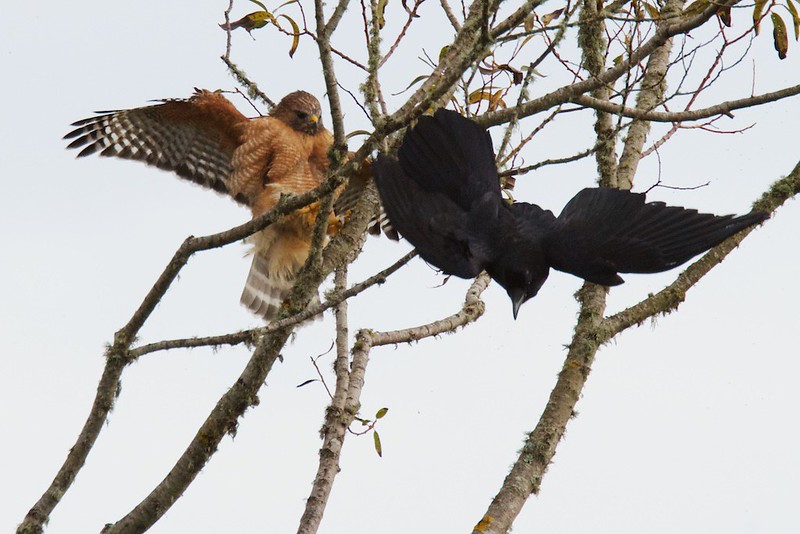 rsh-crow by Redwood Planet, on Flickr Moon Potato fucked around with this message at 10:22 on Dec 3, 2014 |
|
|
|
Moon Potato posted:Nice!  quote:The Red-shouldered Hawk couple was back at the marsh yesterday. After perching together on a willow for a while, the female caught a starling(?) and the male chased away a crow that was being a dick. Hard to say, but I might guess snipe?
|
|
|
|
I made another pass at those Harrier shots to get rid of the halos. The downside is they are more underexposed. Any comments welcome Northern Harrier by justincook5376, on Flickr Northern Harrier by justincook5376, on Flickr Northern Harrier by justincook5376, on Flickr Northern Harrier by justincook5376, on Flickr
|
|
|
|
the halos are probably from oversharpening/clarity. No reason the exposure can't be right. Shouldn't cause halos.
|
|
|
|
I find that for in-flight shots like that bringing shadows up helps more than the exposure values. Cross-posting my own question from the birding thread in A/T since I know a few of you help ornithologists with their research: Kenshin posted:I need a bit of advice here, though it might be just as appropriate for the birding photography thread.
|
|
|
|
I noticed them creeping in when I increased the exposure and whites values in lightroom. There is no clarity adjustment and a lot less sharpening on this second pass.
|
|
|
|
BetterLekNextTime posted:Hard to say, but I might guess snipe? I'm still guessing starling. When I've seen snipes in the area, they've been on the bay or adjacent salt marshes, which are about half a mile from where the shot was taken. The freshwater pond where the hawk was hunting is populated by waterfowl, songbirds (including the occasional flock of starlings), egrets and night herons. Here's another shot of the hawk with prey, although not a horribly clear one: 
|
|
|
|
Kenshin posted:Cross-posting my own question from the birding thread in A/T since I know a few of you help ornithologists with their research: Photos are gold when it's time to make scientific presentations, if you're willing to sort out the copyright issues - few profs will have a budget for buying photos, especially if they're employing you anyways, so this will likely be you offering to give some shots to this prof with the usual (for academics) photo credit appearing next to the image on the screen or poster. Journals like to publish good photos on their covers, which comes with some pretty severe copyright issues (I signed over an image completely to get on the cover of a mid-tier journal in my field, this pissed off a professional photog friend of mine) but again, this prof might (or might not) be very enthusiastic about that kind of thing. Also, field work is fun! Find out how this prof likes to work in the field, decide if that's a work style you can handle, and go for it. Some people are raging workaholics during the brief summer field season, others take it easy, and generally if you're delivering high-quality whatever-it-is-you-need-to-provide you'll have a good working relationship. As an apparent "professional" photographer (it comes down to who is holding the largest camera), you'll get asked to take lots of non-bird photos, too - the study site (bring a wide-angle), people, the usual range of normal-person "We were here" kinds of photos.
|
|
|
|
That's really good advice, thanks. This is 100% hobby for me and I would be happy to provide the dude the photos for free even. I don't need or even really want to charge anyone money for my photos as long as they're being used for personal or scientific uses to be honest (which I understand would piss off some pro photographers as you mentioned).
|
|
|
|
I'd agree with everything that ExecuDork said. One thing in particular is to be really clear about the duration of your commitment. If you are getting to an island by boat, the research team may not be able to get you back to the mainland at the drop of a hat. It's possible the prof may ask that you make a 1 or 2 week commitment. A couple more things: don't be upset if you are excluded from some aspects of the research. It's possible that, for example, only the paid technicians have gone through whatever training or certification to handle live birds/drive the boat/etc. Also, just be sensitive to whether the photography is getting in the way of anything. Try to have your gear ready to go and be efficient at packing stuff up. You don't want to hold the rest of the crew up while spending 10 minutes getting your kit put away. And don't take it personally if the prof says no. I've said no to a handful of photo requests just because the logistics of getting someone out to one of our sage-grouse leks is non-trivial. Just not really worth it from our end for someone we didn't know. All that said, biological field work can be fun as hell- and getting to check it out without having to invest in a full season would be a great opportunity. It's kind of like really tiring grown up summer camp. To answer your other question, I think the only place I've seen puffins on land on the west coast was St. Paul Island (Bering Sea west of Alaska). I'm not sure we saw any nesting burrows but there were both Tufted and Horned puffins on the cliffs along with some other alcid species, along with a butt load of fur seals and super-friendly arctic foxes. I was there on a birding trip so the photo ops were good but rather brief. I get the sense there are more accessible nesting islands for Atlantic Puffins off of Maine.
|
|
|
|
As we saw earlier in this thread the best way to take pictures of Atlantic Puffins is to fly to Iceland.  All that is helpful, and doesn't really go beyond what I expected or am willing to do; luckily with the professor (and locations) I have in mind, longer-than-a-few-day-trips are somewhat unlikely. The two islands he specifically goes to are Protection Island (a mile off the coast near Port Townsend, WA) and Tatoosh Island (less than half a mile from the furthest NW corner of the Olympic Peninsula, a few miles by boat form Neah Bay), which are the only places anywhere near here where puffins nest. Helpfully I'm rather able at sea (plenty of experience on boats on the ocean) and in good enough shape (and willing) to help with grunt work, so hopefully I can persuade him. I'm not going to bother calling his office until February though as apparently from Nov-Jan he is down in the Juan Fernandez islands in Chile. (I emailed last June but never got a reply). (helpfully, his other primary bird-of-study is the rhinoceros auklet, which I'd also love to get pictures of) Kenshin fucked around with this message at 01:09 on Dec 2, 2014 |
|
|
|
Kenshin posted:All gorgeous, but this is one of my lifers; specifically, I want to find one on its butcher post. Thanks! I was also hoping to see one impaling an insect like I've read about...but alas they were all just sitting around looking haughty. Surprisingly large number just hanging around though, I didn't expect to see so many. Edit: So we recently moved to the great winter wasteland of waaay upstate NY ("north country", near Plattsburgh). I'm basically living in Canada now. I'd like to keep up bird photography, but have to deal with winter now. How many of you all go out shooting during snowy winter? Any tips? polyfractal fucked around with this message at 01:33 on Dec 2, 2014 |
|
|
|
Fart Amplifier posted some good points about using long lenses in cold weather in the Gear thread - short version, air temperature inside the lens should match air temperature outside the lens, so rapidly going from warm car <-> cold outdoors can mess with photos. Internet Junky apparently spent all last winter outside getting owl shots. He was highly successful. I think his advice My experience of being outdoors in winter is that your activity level makes a big difference to how much warm clothing you'll need. If you're moving - like my walk to school every morning - you can get away with much, much less than if you're sitting still. Dress for the weather, go outside, and sit down for 30 minutes. What parts of you feel cold? What parts have fallen off? Deal with that, try again, enjoy and go shoot some birds.
|
|
|
|
There has been some awesome shots posted in the last little while!polyfractal posted:Edit: So we recently moved to the great winter wasteland of waaay upstate NY ("north country", near Plattsburgh). I'm basically living in Canada now. I'd like to keep up bird photography, but have to deal with winter now. How many of you all go out shooting during snowy winter? Any tips? ExecuDork posted:Fart Amplifier posted some good points about using long lenses in cold weather in the Gear thread - short version, air temperature inside the lens should match air temperature outside the lens, so rapidly going from warm car <-> cold outdoors can mess with photos. In terms of gear the only time I've ever had a problem with the temps was when I went back inside my house (really warm car wouldn't be good either). Leave your big lenses in their bag and let the whole thing come back up to room temp. If they fit in a ziplock bag put them in one before you go inside. The bonus to cold weather shooting is that I find you get a much sharper picture in the cold because there's no heat distortion in the air to mess up your shot. Here's me last winter shooting owls when it was below -40:  Happy to answer any questions about cold weather shooting.
|
|
|
|
polyfractal posted:How many of you all go out shooting during snowy winter? Any tips? Hand warmers. It was -21C in the sun when I was taking pictures yesterday. I thought the gloves I had would be sufficient, but because I wasn't constantly moving, I was losing feeling in my finger tips real quickly. When the Prairie Falcon was hunting I could only be outside of my car for a couple minutes before I had to hop back in sit on my hands with the seat warmers on full.
|
|
|
|
InternetJunky posted:There has been some awesome shots posted in the last little while! I have a question, how do you deal with battery life loss during the cold? Do you keep several spares tucked in warm crevices and swap them out regularly? Does warming them back up and then putting them back in the camera restore any significant amount of life (until they get cold and die again?)
|
|
|
|
Linedance posted:I have a question, how do you deal with battery life loss during the cold? Do you keep several spares tucked in warm crevices and swap them out regularly? Does warming them back up and then putting them back in the camera restore any significant amount of life (until they get cold and die again?) It's probably a bit trickier with an SLR but with video camera systems using V-mount batteries, the tip I've heard is to wrap a warm sock or something similar around your battery with one of those hand-warmer packets in it.
|
|
|
|
Linedance posted:I have a question, how do you deal with battery life loss during the cold? Do you keep several spares tucked in warm crevices and swap them out regularly? Does warming them back up and then putting them back in the camera restore any significant amount of life (until they get cold and die again?)
|
|
|
|
Awesome, thanks everyone. Definitely going to stock up on hand warmers, and am in the processing of beefing up my snow gear anyway for winter hiking/snowshoeing. Some random winter questions: - Where do I find owls to shoot?  I skimmed your old posts in this thread and it looks like you drove hours in every direction to find them...is that normal or were you just unlucky? Should I be looking in fields or forests? I haven't done much research on owls yet, so the answer might be "depends on the owl" I skimmed your old posts in this thread and it looks like you drove hours in every direction to find them...is that normal or were you just unlucky? Should I be looking in fields or forests? I haven't done much research on owls yet, so the answer might be "depends on the owl"- Did you snowshoe out to remote locations or just stick to places near roads? - Did you prefer bright sunny days and fight the overexposed snow, or overcast grey days and fight the lack of contrast? - Did you notice fewer birds around because of migratory patterns? Or just a different cast of characters? - Does anyone use flash in the winter to help with lighting? polyfractal fucked around with this message at 20:00 on Dec 2, 2014 |
|
|
|
polyfractal posted:Awesome, thanks everyone. Definitely going to stock up on hand warmers, and am in the processing of beefing up my snow gear anyway for winter hiking/snowshoeing. It really helps if you can get some locations from local birder groups. I work a lot with owl banders and as a result I get a huge advantage in finding certain species. The main area I go for Great Greys has a lot of them in a relatively small area. If you were to just go out and drive around looking for them you could drive all winter and never see a single one. Check ebird and see where people are finding them. I would love to shoot owls on bright sunny days, but sadly I hardly ever find any when it's like that. Most of my owl shots are on completely overcast days because that seems to be another trigger to see them during the day. Shooting snow scenes is a bitch and I still don't really know the best way to expose properly. By default I shoot at +2 EV now and accept the fact I'm going to be getting overexposed snow.
|
|
|
|

|
| # ? Jun 6, 2024 14:19 |
|
InternetJunky posted:Finding owls is entirely dependent on the species. Some species can be found throughout the day (Hawk Owl for example), but to find others depends on a lot of factors. The colder it gets the better your chance to see species like Great Greys since they basically have to hunt 24/7 if it's really cold. In InternetJunky's case it really helps to be located in Alberta where you get more species that are visible during the day (Northern Hawk Owl, Great Gray Owl, Snowy Owl). Those of us farther south usually have to settle for Short-Eared Owls as our only daytime hunter.
|
|
|







